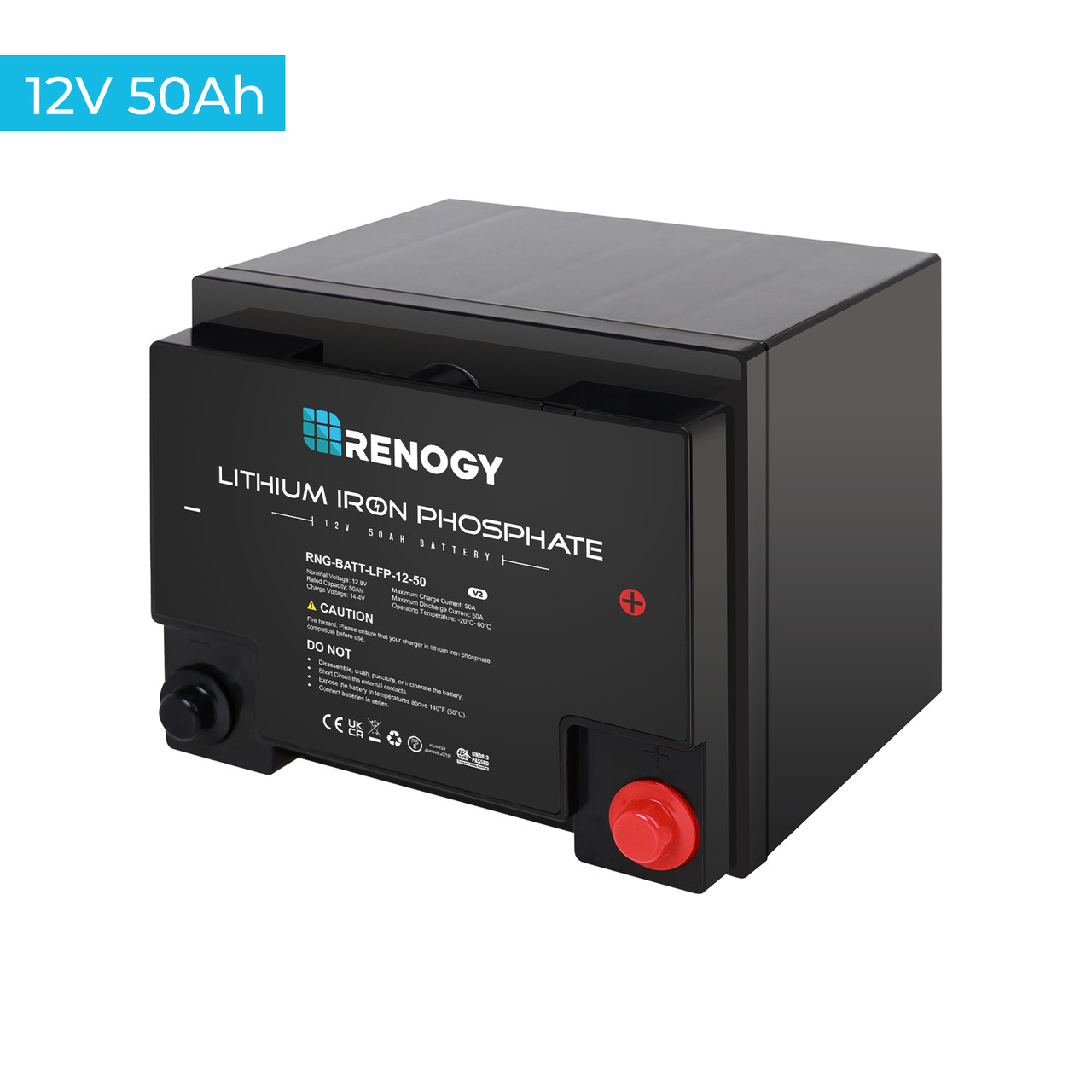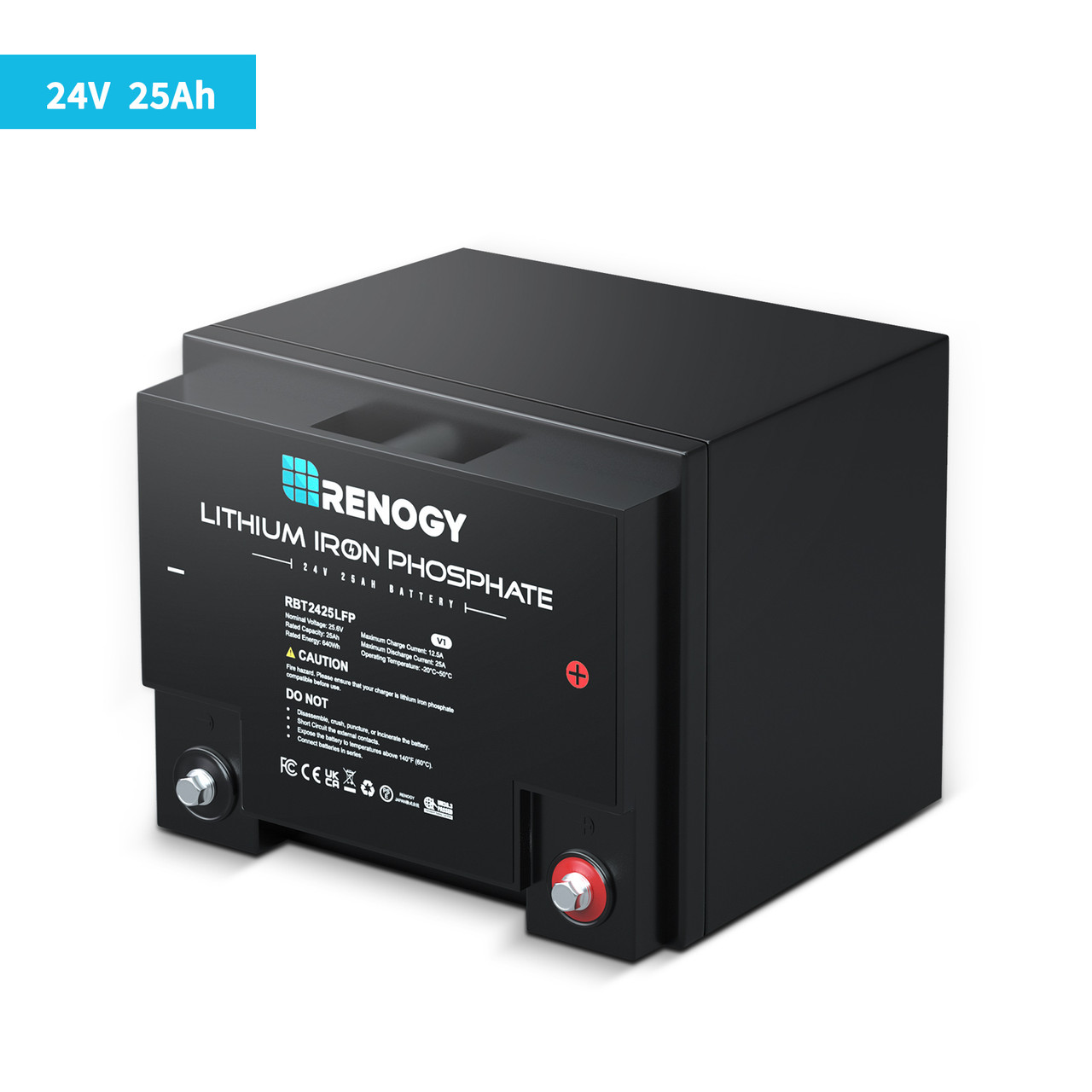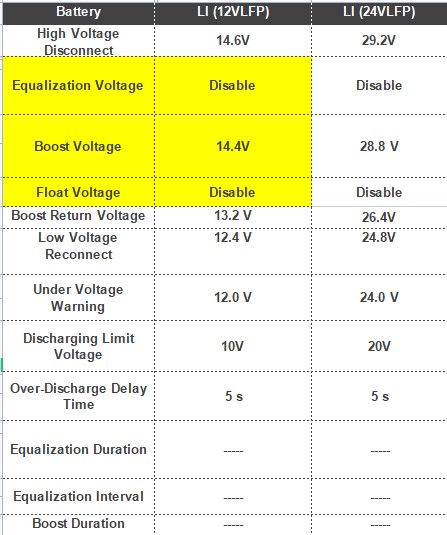
How to Tell If a Lithium-ion Battery Is Bad and How to Test Lithium-ion Batteries?
June 6th 2023
This troubleshooting guide applies to the products that are available in the market:
 Lithium Iron Phosphate Battery 12 Volt 50 Ah View more
Lithium Iron Phosphate Battery 12 Volt 50 Ah View more  24V 25Ah Lithium Iron Phosphate Battery View more
24V 25Ah Lithium Iron Phosphate Battery View more  24V 50Ah Lithium Iron Phosphate Battery View more
24V 50Ah Lithium Iron Phosphate Battery View more
The guide also applies to legacy product models:
- RNG-BATT-LFP-12-100
- RNG-BATT-LFP-12-170
Lithium-ion Battery Issues
Common problems of lithium-ion batteries are:
- Battery not holding charge
- Battery cannot be fully charged
- The battery cannot maintain its charge
How to Tell If a Lithium-ion Battery Is Bad?
For common problems with lithium-ion batteries, we can usually determine the health of the battery by measuring its voltage and inspecting the battery temperature. Please refer to the troubleshooting steps corresponding to each specific problem for more details.
How to Troubleshoot Lithium-ion Batteries?
The following are common issues and corresponding troubleshooting methods for lithium-ion batteries.
Lithium-ion Battery not holding charge
Troubleshooting steps:
- First, it is necessary to confirm whether there has been over-discharge of the battery during use, and if the battery has not been activated by charging for a long period of time.
- Use a multimeter to measure the open circuit voltage of the battery and check whether the battery is in under-voltage protection mode. If the open circuit voltage of the battery is lower than 10V (for 12V lithium battery) or 20V (for 24V lithium battery), it means that the battery is in under-voltage protection mode. If the battery is under-voltage protected, remove all the connecting wires on the battery, and then use a charger with lithium activation function and matching parameters to activate and charge the battery at a temperature above 41℉. After the terminal voltage of the battery rises to the low voltage recovery value, the battery can enter the normal charging state.
- Check whether the charging parameters of the charger are consistent with the battery parameters (as shown in the figure below). If they are not consistent, there may be problems with charging. At the same time, cross-validation of the battery or charger can be done to confirm whether the charger or battery has a problem.
- If the battery fault cannot be confirmed according to the above steps, please contact Renogy for further handling, and provide the above inspection results and relevant videos to Renogy for further confirmation. You can refer to the example video when submitting a case.

Lithium-ion Battery cannot be fully charged
Troubleshooting steps:
- Check the temperature of the environment where the battery is being charged. If it is below 32℉, it may trigger the low-temperature protection of the battery, which can prevent the battery from being fully charged.
- Confirm whether there has been over-discharge of the battery during use and the battery has not been activated and charged for a long period of time. It is also recommended that the depth of discharge (DOD) of the battery should not exceed 80%.
- Check whether the charging parameters of the charger are consistent with the battery parameters (as shown in the figure below). If they are inconsistent, it may cause the battery to not fully charge. At the same time, a cross-validation of the battery or charger can be done to confirm whether there are any problems with the battery or charger.
- If the above steps still cannot confirm whether the battery is faulty, please contact Renogy and provide the system wiring diagram (including the load model and power), and provide the above troubleshooting steps and results to Renogy for further confirmation.

Lithium-ion battery cannot maintain its charge
Troubleshooting steps:
- To fully charge the battery, use a charger that matches the charging parameters of the battery (as shown in the figure below). The voltage should be at 14.4V when fully charged. Disconnect all the battery connections and let it rest for two hours, then measure the open-circuit voltage of the battery. If the battery terminal voltage is above 13.4V, it means the battery is fully charged. Leave the battery idle overnight (without any connections to the battery and without significant changes in ambient temperature), and then measure the open-circuit voltage of the battery again. If there is a significant drop in the open-circuit voltage, it indicates that the battery is faulty.
- If there is no significant change in the battery voltage after being left idle, connect a resistive load (such as an electric water heater) to discharge the battery until it reaches low-voltage protection. Record the discharge time, calculate the battery capacity based on the load power and discharge time, and compare it with the rated capacity.

Still have problems?
Get additional support with our customer support












